Are you ready to become the next Serena Williams or Roger Federer? If so, mastering the proper footwork is essential. But don’t worry, this guide will have your feet hustling and shuffling around the court in no time! Get ready to put your best foot forward and get a jump start on your professional tennis journey!
For tennis players, footwork is one of the most important aspects of their game. It’s what gives them mobility and stability on the court, allowing them to reach balls in difficult positions, establish better footing for their shots and move freely around the court to adjust to play from their opponents. Unfortunately, it’s also one of the most overlooked aspects by those just starting out in tennis.
The ability to practice and perfect footwork skills is key for any tennis player wishing to improve their game—and get even better on the court. Fortunately, there are drills that are specifically designed for this purpose. By engaging in these drills regularly and following instructions carefully, tennis players will be able to make significant strides in their footwork ability as well as become more confident in their playing style.
In this guide, we shall discuss some valuable footwork drills that are used by amateur and professional players alike so read on if you would like to know more!
Getting Started: The Basics
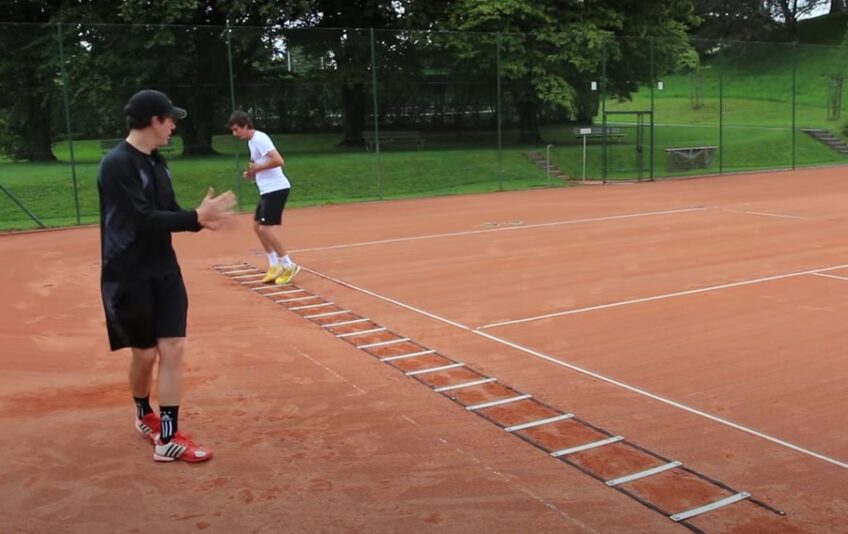
Before mastering more complex footwork drills for tennis, players should get used to their court movements and the correct way to use their feet when playing. To do this, core fundamentals such as moving properly on the court and strategically coming in and out of the net have to be learned first.
Here are some basics that any player must understand before starting more advanced footwork drills:
- Moving forward and backward: Players are recommended to move first with small steps, and increase their speed gradually until they become comfortable with their movement while keeping their balance.
- Side-to-side movement: This is one of the most important skills a player can master – namely their crossover step. The key is not so much in how quickly you can move side-to-side; it’s more important that you maintain good balance while doing it.
- Getting in and out of the net: Agile quick feet come into play here as players will need to move quickly as they approach or move away from the net. Practicing how to do this in unison with powerful shots can be helpful for a player’s game.
By familiarizing yourself with these basics, you will find that it is much easier to execute more advanced footwork drills during training. For example, by understanding how runners use crossover steps when running quickly from side to side, you can apply that same technique in your own game during drills involving quick reaction times on the court.
Choosing the Right Footwork Drills
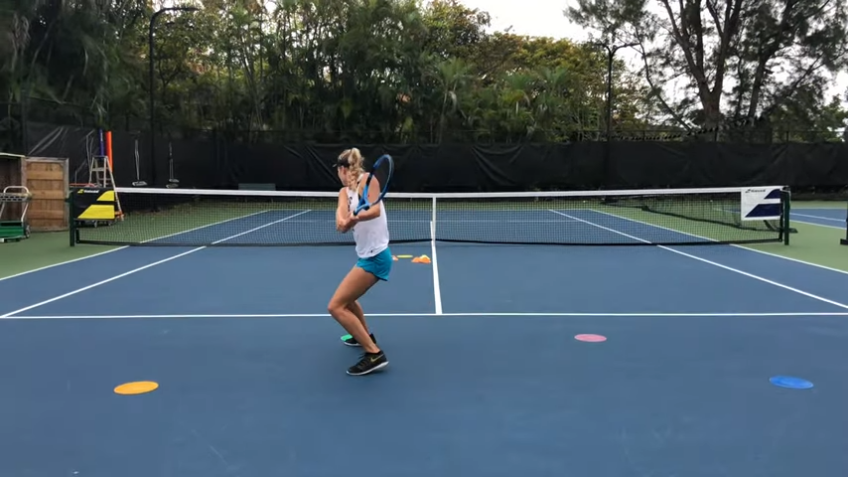
When choosing footwork drills, it’s important to keep in mind the type of court you will be playing on. Footwork drills have different challenges and demands on different types of courts. You don’t want to practice drills for a clay court if you’re playing on a hard court or vice versa.
Beyond the type of court, it’s essential to consider your level, goal(s) and fitness level in your drill choice. As an example, beginner players may find one drill easier than an advanced player. A change in agility and speed may benefit an advanced player more than a beginner player. It’s also important to match the duration of the drill whether you are doing 30-second intervals or longer sets.
Three common footwork drills include:
Quick Feet Drill:
An excellent all-around drill that builds agility and speed across the tennis court. Stand behind the baseline with feet together and practice shuffling your feet back and forth while covering as much ground as quickly as possible without overexerting yourself (for beginners) or attempting to reach specific points on the court (for more advanced players).
Ladder Drills:
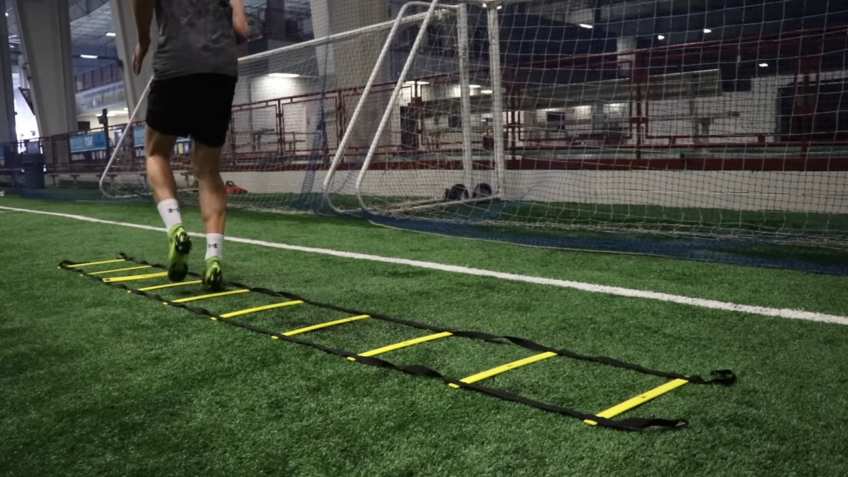
These can easily be tailored from simple linear drills that require faster speed over short distances for beginners all the way up to complex star shapes or circular patterns for more experienced players who need added challenge else increase their mental game acuity). Ladders can help build a wide range of foot movements such as running backward and forward, jumping side to side, hopping up and down, and skipping is an excellent way to improve overall fitness while increasing quickness agility and balance.
Hopscotch Drills:
Another variation was making traditional hopscotch into a series of directional moves increasing accuracy by requiring athletes to control their body movement better requires athletes control their body movement better which simulates every positional move imaginable in tennis combined with developing movement speed with hops jumps silicate jukes turns sideways movers etc,. Hopscotch drills are best utilized by experienced players who are looking for creative ways to increase their level of play in each function aspect for tennis skills tennis strategy etc,.
Lateral shuffles:
The lateral shuffle drills help players learn how to stretch across their bodies efficiently in order to change direction quickly while maintaining balance. During these drills, concentrate on taking small steps while keeping your body low as if you were running on sand or grass. Do not use too much force when pushing off with every step you take – aim for graceful movement instead of powerful strides.
Jump rope:
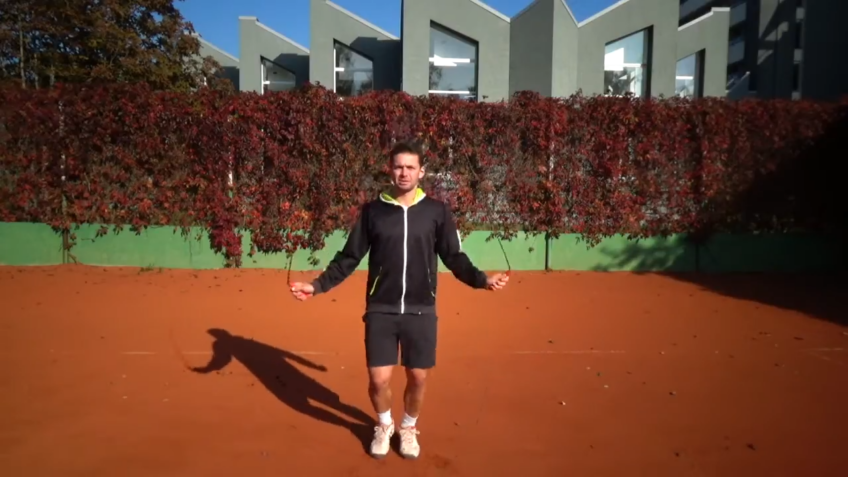
This drill is one of the easier ways to increase agility and ensure proper footwork in tennis (as well as stamina). Focus on taking short jumps that allow you to move easily from side to side rather than jumping up high off the ground – remember that safety is a priority here when developing quick reflexes with stepping backward or forward! If needed, slow down or stop once in a while so that jump rope movements become more familiar with increased control over time.
Split step:
The split step drill teaches players how to react quickly when hitting a serve or approaching a shot from an opponent by maximizing both strength and stability when transitioning from one position to another – this helps build an explosive response which adds power into every shot taken! Start stationary before making small jumps while spreading both feet apart upon landing each time so they are positioned far enough apart for maximal leverage during movement changes required on the court during gameplay scenarios involving various shots coming onto them at different angles & speeds etc.
Practicing the Footwork Drills
Practicing the footwork drills on a regular basis will help you to build speed and agility which are essential for success during match play. To start, find a large open space to practice in and set up a series of cones or markers that simulate court movements.
Focus on moving your feet quickly and attacking from different angles, practicing the same drill multiple times with different variations. By repeating this process, you are helping to hone your motor skills for specific situations such as staying light on your feet when changing direction or moving quickly when rushing to the net.
When performing footwork drills, it’s important to take your time and focus on technique. Maintaining balance is also key as well as staying focused on where you need to go next as if you were in an actual game. Remember that executing footwork efficiently will require dedication and consistency – pay attention closely to how your body feels during each move and make adjustments accordingly until muscle memory becomes second nature.
Additionally, don’t be afraid to add variations that challenge yourself further such as extra turns or changes in direction keep your brain guessing but still maintain the accuracy of execution across both strokes.
The more practice you do here, the easier it will be for both mind and body to execute perfectly during match play!
Common Mistakes to Avoid
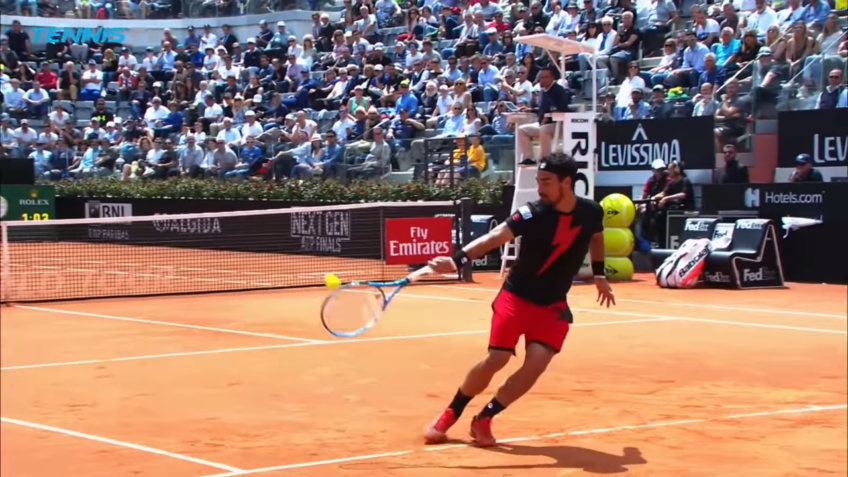
When performing footwork drills, it is important to get the most out of them by avoiding any common mistakes. Performing footwork drills incorrectly can have an adverse effect on your game and can even lead to injury if you are not careful. Here are several mistakes to avoid when doing footwork drills:
Overreaching
During a drill, you should never try to reach farther than your current capabilities will allow. This means stretching beyond your current range of motion in order to get into position and maintain balance. Overreaching can lead to a decrease in agility and cause undue strain and stress on the body, which can lead to injury.
Moving too quickly
Moving too quickly through each element of the drill can not only take away from proper technique but also lead to fatigue before completing the entire exercise sequence. It is important to move with purpose during each movement but maintain control throughout each drill, ensuring that you can complete all of the prescribed repetitions without feeling winded or overly tired.
Lack of focus
Many players make the mistake of practicing footwork drills without really focusing on what they are doing. It is essential that players pay attention to their body mechanics during the execution of each drill in order for it to be effective; focusing on the proper form will ensure that players receive all of the desired benefits from their training session.
Incorrect technique
When first learning how to perform a particular drill or maneuver correctly, it is important that players take their time in order to perfect their form and technique before attempting a full-speed execution.
The bad technique increases one’s risk for injury or failure later on when competing in matches or tournament play so it is worth taking time during practice sessions to make sure that fundamentals are being done correctly every time they are performed.
Conclusion

So there you have it: a few essential footwork drills that can help you perfect your skills on the tennis court. Adopting proper form and footwork when playing tennis is key to optimizing your performance, so make sure you practice the drills listed here regularly. By taking the time to improve your agility, balance, and speed, you’ll develop into a fierce competitor.
Don’t forget that proper technique is just as vital as hard work and dedication. Make sure that you’re always using good form with your upper body too – such as keeping your arms up, remaining relaxed and ready to react quickly. Staying focused on each drill will allow for maximum effectiveness of each exercise over time.
Your commitment to becoming an overall better performer can undoubtedly pay off in the end! With perseverance, patience and practice – ultimately you will benefit from increased athleticism across the board. So use these drills as a stepping stone towards improved strength and skill in your tennis game today!
Frequently Asked Questions
What drills should I do to improve my footwork in tennis?
Some of the best drills for improving footwork in tennis include the following: side-to-side hops, forward-backward hops, split steps, hurdle drills, and agility ladders.
How often should I do these drills?
You should aim to do these drills at least 3 days a week, with a rest day in between. Additionally, you should do a few warm-up drills before playing a game of tennis.
What are the benefits of doing footwork drills?
The benefits of doing footwork drills include improved speed, agility, and balance, as well as increased strength and coordination. Improved footwork will also help with your overall court awareness, allowing you to be more in control of your shots.

